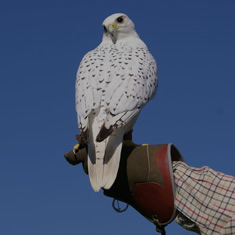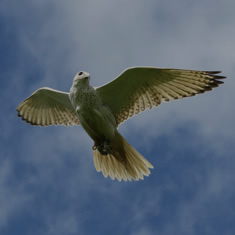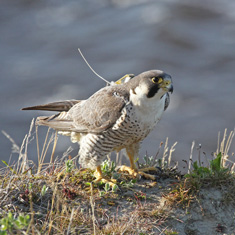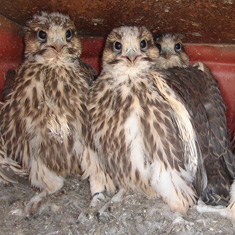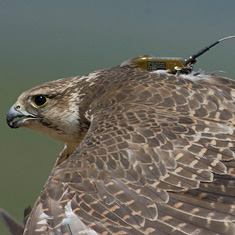- Breeding Population Estimates
The table gives an estimate for the number of breeding pairs of Sakers in each of the range countries.
|
0Country |
Population Estimate | Date of Estimate | Data Quality* | 15 Year Trend |
| Austria | 15-25 | 2004 | B | Slight increase |
| Bulgaria | 0-6 | 2007 | C | Declining/Extinct |
| Croatia | 2-5 | 2007 | D | Unknown |
| Czech Republic | 15-16 | 2008 | B | Stable |
| Georgia | 3-5 | 2003 | D | Unknown |
| Hungary | 180-200 | 2008 | B | Increasing |
| Moldova | 8-15 | 2008 | D | Unknown |
| Poland | 0-2 | 1998 | D | Unknown |
| Romania | 2-12 | 2007 | C | Stable |
| Serbia | 50-60 | 2008 | C | Increasing |
| Slovakia | 31-32 | 2007 | C | Increasing |
| Turkey | 5-70 | 2007 | D | Unknown |
| Ukraine | 270-345 | 2005 | C | Increasing |
| Iran | 10-100 | NA | E | Unknown |
| Iraq | 0-50 | NA | E | Unknown |
| Kyrgyzstan | 100-120 | 2001 | D | Declining |
| Uzbekistan | 100-150 | 2000 | D | Declining |
| Russian Federation | 1500-3000 | 2007 | C | Declining |
| Turkmenistan | 100-150 | NA | E | Unknown |
| Tajikistan | 10-100 | NA | E | Unknown |
| Afghanistan | 10-100 | NA | E | Unknown |
| Pakistan | 0-50 | NA | E | Unknown |
| Kazakhstan | 2000-3000 | 2008 | C/D | Stable/Declining |
| Mongolia | 2000-5000 | 2008 | D | Stable |
| China | 3000-5000 | 2008 | D | Unknown |
| Total | 9411-17613 | NA | B-E | Declining |
Table 1. Saker Falcon population estimates by country.
*Data quality scores for the population estimates are based on the following criteria: A = excellent, quantitative data available with precision estimates based on comprehensive survey work; B = good, quantitative data available, based on extensive field work; C = medium, quantitative data available, based on limited field work; D = poor; no quantitative data available and limited field surveys; E = No data, guess.
The above table illustrates that in most countries where the Saker Falcon breeds there are no good, quantitative population estimates. This is particularly true for countries across
Central Asia , where the vast majority of the world’s Saker Falcons breed.
A fully referenced version of the article on Saker Falcon breeding population estimates in Asia from Falco #33 (Spring 2009) can be found here
Conservation and Research
- Raptor Conservation
- The Peregrine Falcon
- Mauritius Kestrel
- Red Kite Conservation
- New Zealand Falcon Conservation Project
- Migration and Movements of Saker Falcons
- Falcon Genome Project
- Electrocution of Birds of Prey
The Saker Falcon
- The Saker Falcon
- Description
- Taxonomy
- Breeding Distribution
- Breeding Population Estimates
- Wintering Distribution
- Habitat
- Hunting and Diet
- Breeding and Biology
- Migration
- Conservation Status
- Conservation Threats
- Sustainable Harvest
- Conservation overview (HH Sheikh Zayed)
- Captive breeding & research
- Bibliography
- Satellite Tracking
- Reintroduction in Bulgaria
- Reintroduction in Bulgaria
- Mongolian Artificial Nest Project Information
- Mongolian Artificial Nest Project Articles

